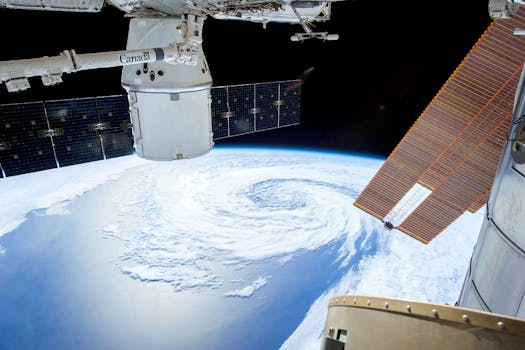High-Tech Horizons: The Evolution of Earth-Orbiting Technologies for Observation

High-Tech Horizons: The Evolution of Earth-Orbiting Technologies for Observation
High-Tech Horizons: The Evolution of Earth-Orbiting Technologies for Observation has been a game-changer in the field of space exploration and observation. The ability to launch satellites and other spacecraft into earth’s orbit has enabled us to study our planet in unprecedented detail, from the movement of the oceans to the growth of forests. In this article, we will explore the history and development of earth-orbiting technologies, their applications, and the impact they have had on our understanding of the planet.
Introduction to Earth-Orbiting Technologies
Earth-orbiting technologies refer to the systems and instruments used to launch, operate, and maintain spacecraft in earth’s orbit. These technologies have been in development since the 1950s, with the launch of the first artificial satellite, Sputnik 1, by the Soviet Union in 1957. Since then, the technology has evolved rapidly, with significant advancements in materials science, propulsion systems, and instrumentation. Today, earth-orbiting technologies are used for a wide range of applications, including satellite imaging, space exploration, and telecommunications.
Applications of Earth-Orbiting Technologies
One of the most significant applications of earth-orbiting technologies is satellite imaging. Satellite imaging involves using satellites in earth’s orbit to capture images of the planet’s surface. These images can be used for a variety of purposes, including mapping, land use planning, and environmental monitoring. For example, satellite images can be used to track the movement of glaciers, monitor deforestation, and detect natural disasters such as earthquakes and hurricanes.
Another significant application of earth-orbiting technologies is space exploration. Space exploration involves using spacecraft to study the earth’s orbit and beyond. Spacecraft can be used to study the earth’s magnetic field, the solar wind, and the radiation environment in space. They can also be used to search for water and other resources on the moon and other celestial bodies.
Impact of Earth-Orbiting Technologies
The impact of earth-orbiting technologies has been significant, with far-reaching consequences for our understanding of the planet and its resources. Satellite imaging has enabled us to study the earth’s surface in unprecedented detail, from the movement of the oceans to the growth of forests. Space exploration has enabled us to study the earth’s orbit and beyond, providing valuable insights into the solar system and the universe.
Earth-orbiting technologies have also had a significant impact on the environment. For example, satellite imaging has been used to track the movement of oil spills, monitor deforestation, and detect natural disasters such as earthquakes and hurricanes. Space exploration has also provided valuable insights into the earth’s climate, enabling us to study the effects of global warming and climate change.
Conclusion
In conclusion, High-Tech Horizons: The Evolution of Earth-Orbiting Technologies for Observation has been a game-changer in the field of space exploration and observation. The ability to launch satellites and other spacecraft into earth’s orbit has enabled us to study our planet in unprecedented detail, from the movement of the oceans to the growth of forests. As the technology continues to evolve, we can expect to see even more significant advancements in our understanding of the planet and its resources.